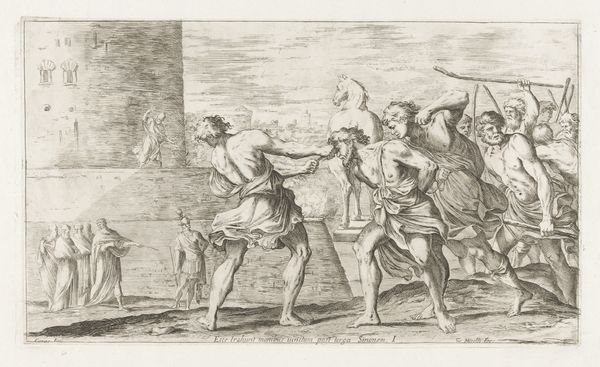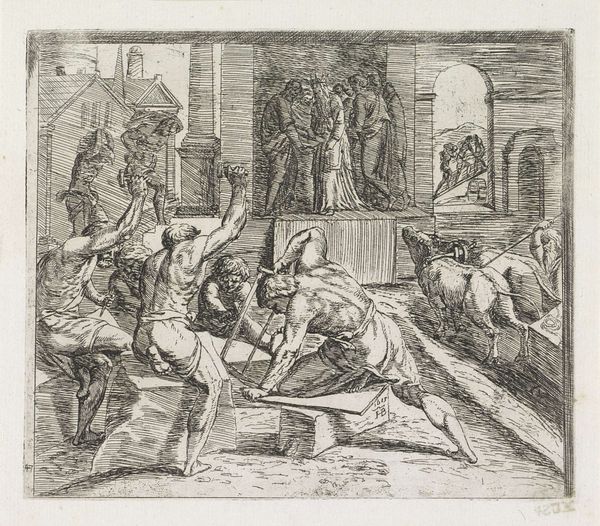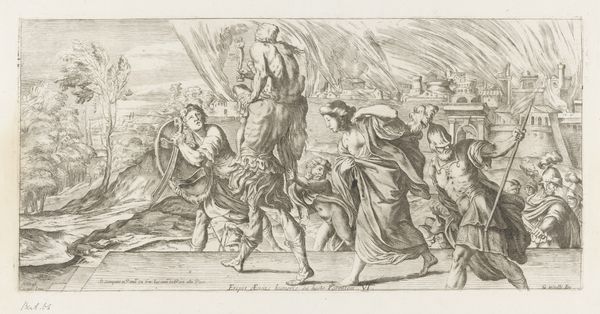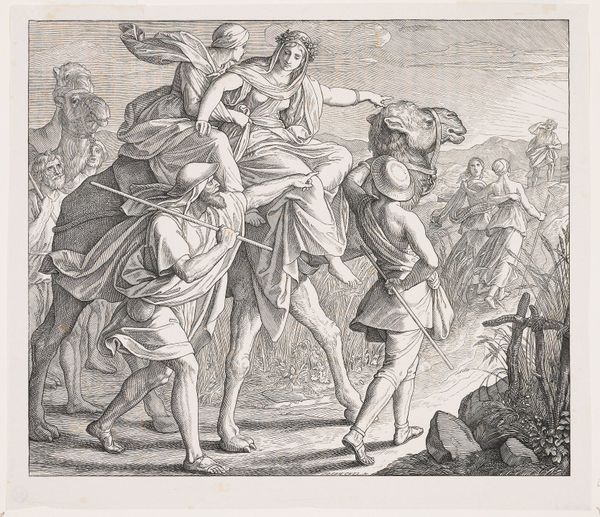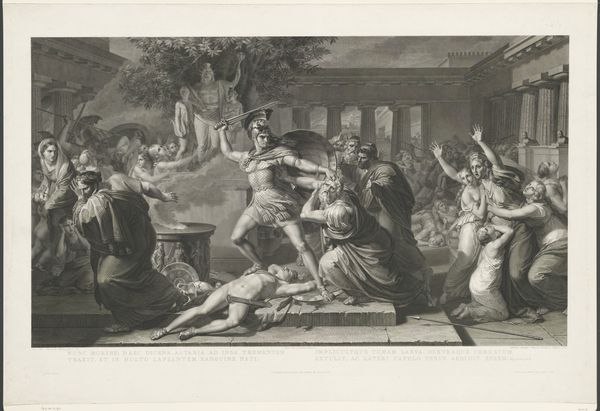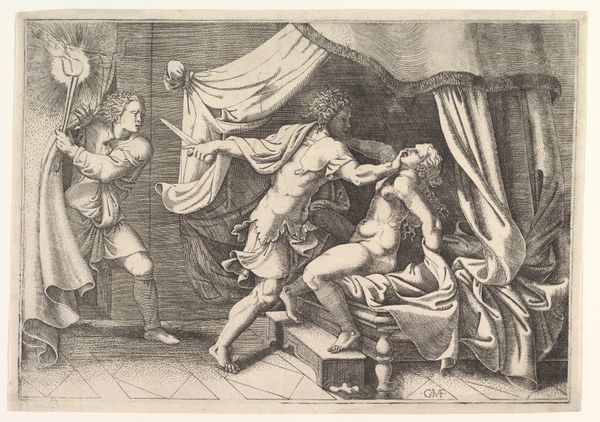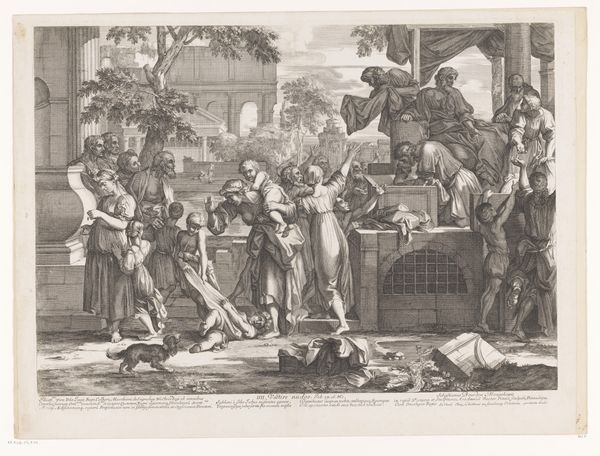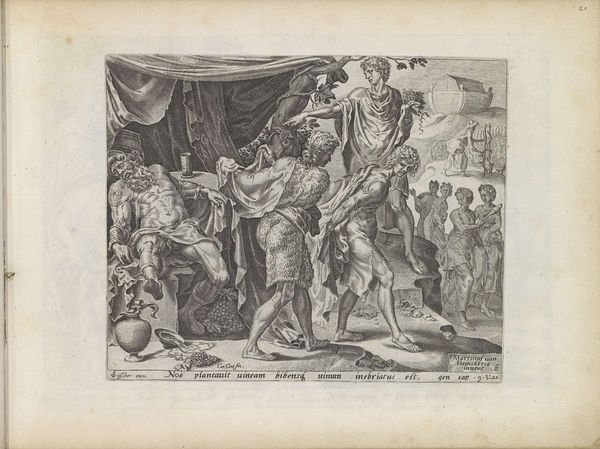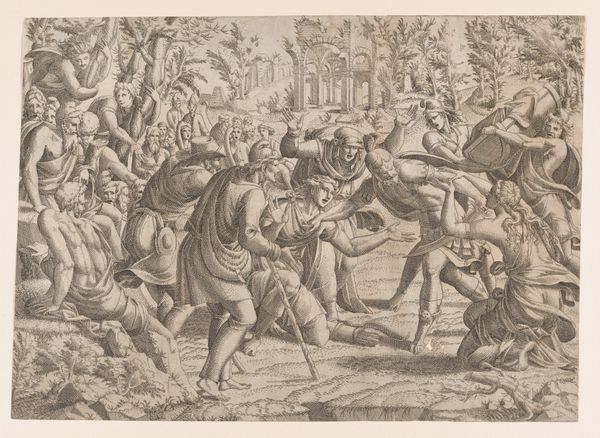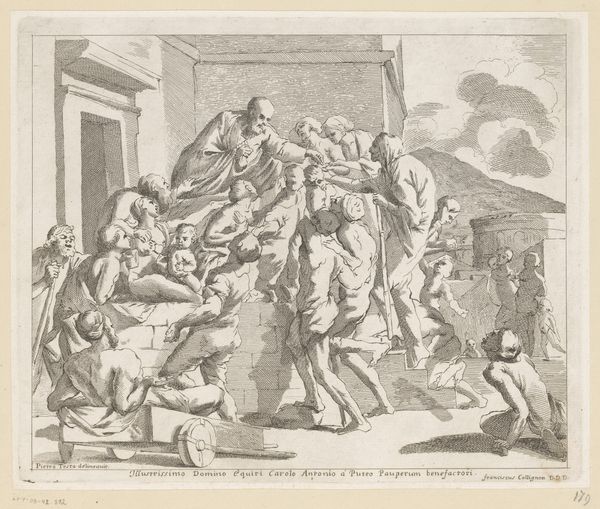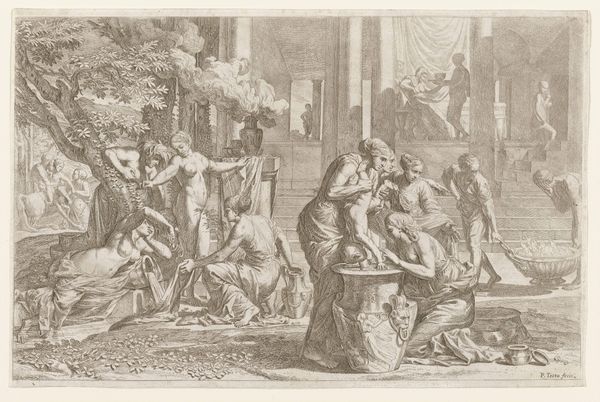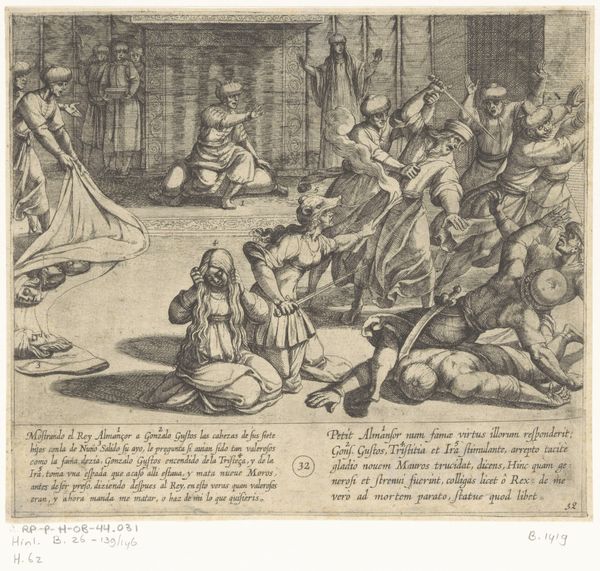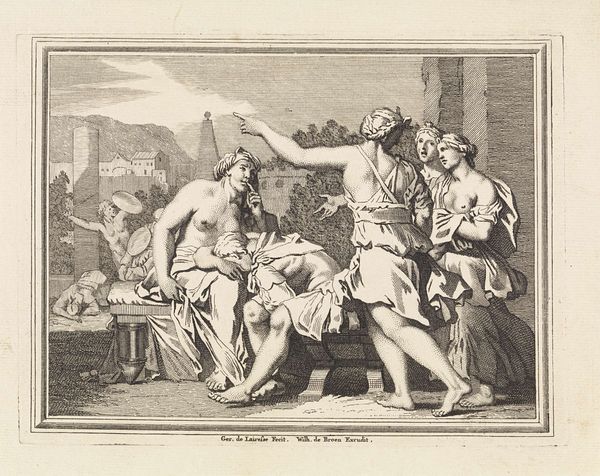
print, engraving
#
allegory
#
baroque
# print
#
figuration
#
history-painting
#
engraving
Dimensions: height 250 mm, width 426 mm
Copyright: Rijks Museum: Open Domain
Editor: This engraving by Giuseppe Maria Mitelli from 1663 is called "Geest van Creüsa verschijnt aan Aeneas," or "Ghost of Creusa appearing to Aeneas." The scene is chaotic. There's a battle raging and then this ethereal figure appearing... It makes me wonder, what's the significance of Creusa's ghost in this context? Curator: Indeed. Look at the layering of symbols here. Aeneas is caught between the violence of earthly conflict, signified by fallen bodies and panicked figures, and the spectral realm represented by Creusa. She emerges from the smoke – a visual reminder of Troy's destruction – becoming almost one with it. Notice her gesture; she's pointing, directing Aeneas, toward a destiny beyond the immediate chaos. This "apparition" isn't just a ghost; it's the cultural memory of Troy urging Aeneas toward his Roman future. What emotions does that juxtaposition evoke for you? Editor: It makes me think about how the past always shapes the present. I see Aeneas looking rather alarmed by her appearance, almost reluctant to follow her. Curator: Exactly! That reluctance highlights the psychological weight of history. He's burdened by loss, yet compelled to carry the weight of his heritage into the future. Consider the shield he holds; it’s a defensive posture, but also a symbol of Roman power he will eventually embody. So Creusa is the call of his origins and his wife who died fleeing Troy. Editor: So the engraving isn't just illustrating a scene; it's about the burden and the promise of cultural memory? Curator: Precisely. It asks us to contemplate how individuals and nations carry their histories, sometimes with great difficulty. We are both shaped by the past, yet responsible for what we make of it. Editor: I see it now – Creusa is not just a ghost, but an embodiment of both loss and destiny. It makes the whole scene resonate in a completely different way! Curator: I'm glad we uncovered those historical layers, viewing Mitelli's art as a story about collective heritage.
Comments
No comments
Be the first to comment and join the conversation on the ultimate creative platform.
